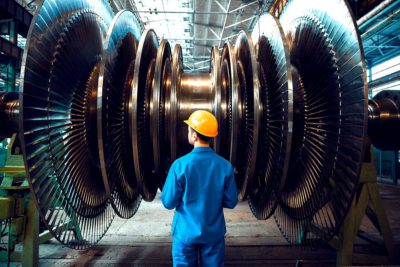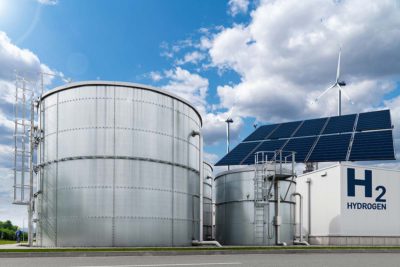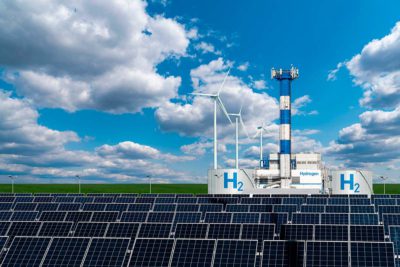Chemical Stripping Lines
Automated chemical stripping plants for the maintenance of land-based gas turbine components in demanding conditions.
In the energy sector John Cockerill Surface Treatment focuses on nickel plating needed in manufacturing of electrolysers, stripping lines for gas turbine maintenance and waste water treatment for flue gas desulfurization plants, where we are one of the leading technology companies in the world.
John Cockerill Surface Treatment has a long experience of building large-scale and high capacity wastewater treatment units for fluid gas desulphurization plants. Another segment that we specialize in, offering a one-stop shop model, is stripping plants used in gas turbine MRO, combined with NDT (FPI systems) and wastewater treatment plants.

Acid stripping lines to remove thermal coatings of turbibe blades during maintenance of gas turbines.

Nickel and platinium plating lines for the surface treatment of bipolar plates and electrodes on H2 electrolysers.

Careful platinum plating boosts the performance of hydrogen electrolyzer plates. Ask for John Cockerill´s unique solution.

Galvatek’s wastewater treatment plant solutions for power plant applications are typically part of the flue gas cleaning systems of coal-fired power plants, but also in biomass power plants.

We participate in the planning of the entire project, offering services from the beginning to the end – from planning, to the delivery of the equipment itself, and all the way to the commissioning of the plant. We deliver full-scale workshops as greenfield projects including wastewater treatment, NDT inspection, painting, and other facilities.
In gas turbine MRO, stripping plants ventilation solutions and material selections are of high importance. The use of HCL and other highly corrosive chemicals set special requirements for equipment and components. John Cockerill is experienced in engineering plant solutions to meet these needs.
Because of our own technology, John Cockerill’s solutions for energy industry are always built to meet the environmental, health and safety requirements. The key is in automation, which means minimum human involvement is necessary in hazardous processes.